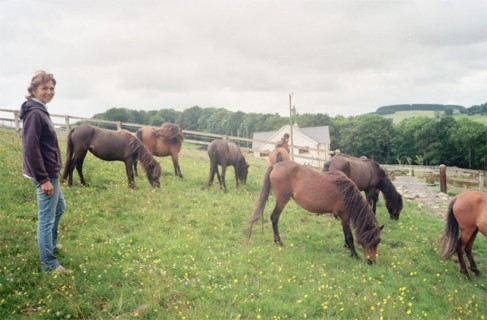Skyros Ponies are believed to be descended from horses
brought to the island of Skyros during the 5th to 8th centuries BCE by Athenian
colonists. It is possible that they were used by Alexander the Great in his
conquests, and also possible that they are the horses depicted in the friezes
of the Parthenon.
They developed mainly as semi-feral horses in the
mountainous area on the southern part of the island, although individuals were
caught and tamed by farmers for agricultural uses. The advances in agricultural
mechanization during the 1960's called into question the survival of the breed,
as they were no longer needed for farm work and their numbers were already low.
The prevalence of feral donkeys in the same area of the island that the Skyros
calls home is also a threat, as the two groups cross-breed and prevent pure
breeding by the Skyros ponies.
During the 1970s there was a short-lived breeding program
focused on the Skyros breed. This program brought publicity to the breed, and
resulted in them being declared critically endangered in 1991.
They are often kept semi-wild, ranging the mountainous
interior of the island until they are needed at the harvest for threshing
grain. Skyros ponies are also used as pack horses, harness horses, for riding
and for breeding hinnies or mules.
They generally stand between 9.1 and 11 hands high, and may
be gray, bay, or palomino.
As of 2001, there were ninety-three breeding mares and
fifty-two studs. It is not clear if all members of the herd are pure-bred. The
breed is considered by many to be endangered, although no government or
international authority has made such a declaration. Nevertheless the existence
of such small numbers of ponies is conducive to inbreeding and is therefore
likely to endanger the ponies' survival even further.
A possible obstacle to the recovery and expansion of the
herd is a ban on exportation of the animal from the island. The export of
Skyros-derived hinnies or mules is not illegal, and consequently there is a
great economic incentive to breed hybrids for export instead of purebred ponies
to continue the bloodline. A group called the Silva Project is currently
working to promote the foundation of Skyros herds elsewhere in Greece and
abroad.

